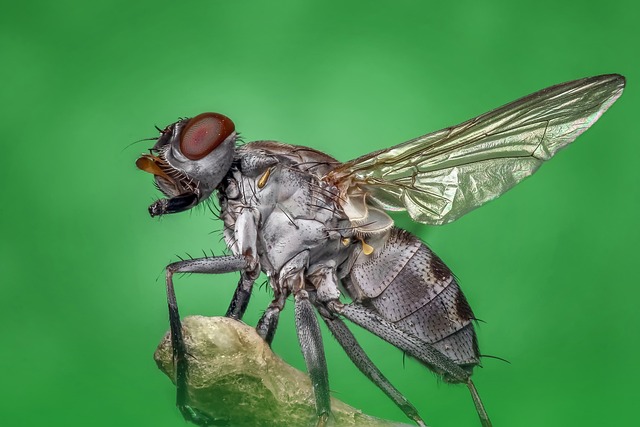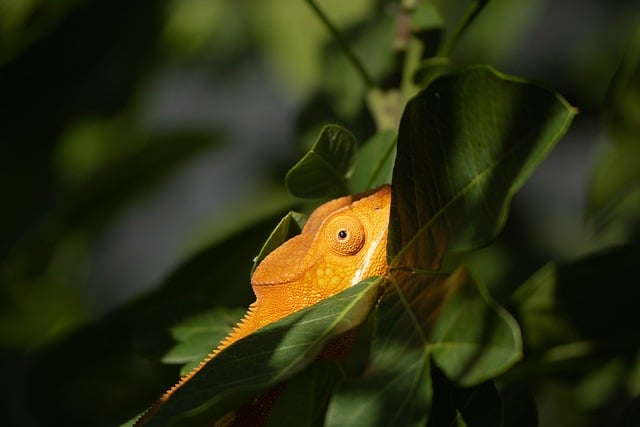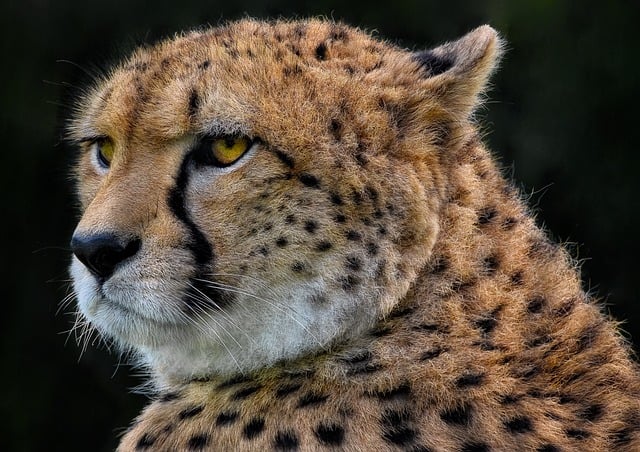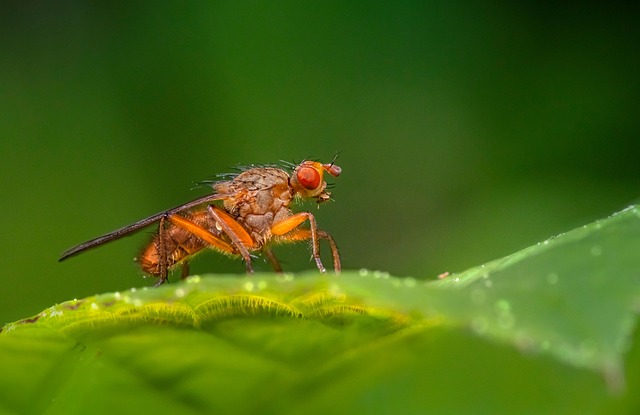Wildlife pest control is a nuanced, humane approach balancing human interests and conservation. It uses strategies like habitat modification, deterrents, and non-lethal trapping methods to manage human-wildlife interactions in urban areas where traditional removal methods often cause harm. Understanding species' behaviors helps tailor solutions. Professional services employ advanced tools for stubborn or dangerous infestations while adhering to local regulations and ethical practices. Preventative measures and community engagement are key to long-term, sustainable solutions for humane wildlife management.
“In many communities, wildlife pest control has become a pressing issue as human habitats increasingly overlap with natural environments. This article explores humane wildlife removal practices, essential in maintaining ecological balance and mitigating conflicts between humans and animals. We delve into understanding basic wildlife pest control concepts, identifying common pests, and examining non-lethal removal techniques. Additionally, it highlights the role of professionals, legal considerations, preventive measures, and community engagement for sustainable wildlife management.”
Understanding Wildlife Pest Control: The Basic Concepts

Wildlife pest control, a nuanced approach within the broader field of humane wildlife removal, involves strategies to manage and mitigate interactions between humans and wild animals in environments where they don’t belong. The core concept revolves around finding balanced solutions that protect human interests while ensuring the well-being and conservation of wildlife. It’s not about eradicating animals but rather about understanding their behavior and implementing non-lethal methods to resolve conflicts.
Basic principles include habitat modification, deterrents, and trapping as non-fatal alternatives to killing. By altering environments to make them less appealing to pests, using scent repellents or noise deterrents, and employing live traps, professionals can humanely capture and relocate animals. This method respects the natural balance by removing the cause of conflict rather than directly harming the animal.
The Need for Humane Wildlife Removal Practices

In many urban and suburban areas, wildlife pest control has become an increasingly pressing issue. As human habitats expand into natural spaces, wildlife is often forced into close proximity with people, leading to conflicts. Traditional methods of wildlife removal can cause significant harm or even kill animals, which not only violates animal welfare standards but also disrupts ecological balances. The need for humane wildlife removal practices is paramount in ensuring the safety and well-being of both humans and wildlife while maintaining a harmonious coexistence.
Humane wildlife removal focuses on strategies that respect the dignity and life of the animals involved. These methods prioritize non-lethal techniques, such as deterrents, habitat modification, and controlled relocation, to address wildlife-human interactions. By adopting these practices, communities can effectively manage wildlife populations without causing unnecessary suffering or ecological disruptions. Moreover, promoting humane wildlife removal contributes to a positive public perception of conservation efforts and fosters a deeper appreciation for the natural world among residents.
Identifying Common Pests and Their Behaviors

When it comes to humane wildlife removal, understanding common pests and their behaviors is key for effective wildlife pest control. Animals like squirrels, raccoons, opossums, and birds can often infiltrate homes and businesses, seeking shelter and food. Recognizing signs of their presence—such as noise in attics, tracks along gutters, or droppings—is crucial. Each species exhibits unique behaviors that can provide clues about the best approach for safe removal and prevention.
For instance, squirrels are agile climbers, often entering through open windows or loose vents. Raccoons, known for their dexterity, can squeeze through small openings and are particularly drawn to food sources like pet food and garbage. Opossums prefer areas with shelter and may enter through holes in the ground or under structures. Understanding these habits allows professionals to employ tailored methods that respect both the wildlife and property owners’ needs, ensuring a humane resolution for all parties involved.
Non-Lethal Removal Techniques: A Comprehensive Overview

Wildlife pest control often faces a delicate balance between mitigating human-wildlife conflict and preserving ecosystems. Non-lethal removal techniques offer a humane approach, aiming to deter wildlife from residential areas while ensuring their well-being. These methods are particularly useful for species that aren’t inherently aggressive but have become accustomed to urban environments, such as raccoons, opossums, and certain bird species.
The strategies encompass various tactics like habitat modification, noise deterrents, visual scarers, and scent repellents. For example, making spaces under decks or buildings less attractive through mesh fencing or removing potential food sources can discourage wildlife from seeking shelter in these areas. Visual scarers, such as reflective objects or motion-activated devices that emit sounds, can startle animals without causing harm. These methods promote co-existence by encouraging wildlife to find alternative habitats, thereby reducing conflicts and maintaining the balance of local ecosystems.
The Role of Professional Wildlife Management Services

In many scenarios, especially when dealing with stubborn and potentially dangerous wildlife infestations, professional wildlife management services prove indispensable. These experts in wildlife pest control possess the knowledge, tools, and experience needed to handle a wide range of issues, from birds nesting in buildings to more aggressive animals like snakes or bears. Their role is multifaceted: they offer safe and humane removal strategies, implement effective prevention measures, and ensure the well-being of both the wildlife and the residents.
Professionals in this field are trained to navigate the complex legalities surrounding wildlife management, ensuring compliance with local and state regulations. They employ innovative techniques and technology to locate and safely extricate animals while minimizing disruption to the environment. Moreover, these services often provide ongoing support through regular inspections and maintenance plans, thereby preventing future wildlife pest control issues.
Legal and Ethical Considerations in Wildlife Control

When it comes to humane wildlife removal, understanding legal and ethical considerations is paramount in wildlife pest control. Different regions have distinct regulations regarding the handling and relocation of wild animals, emphasizing the importance of adherence to local laws. Professional wildlife control operators must possess permits and follow specific guidelines to ensure the well-being of both the creatures and the community.
Ethical treatment involves not only avoiding harm but also minimizing stress on the animals. This includes using humane trapping methods and providing safe, appropriate habitats for relocation. The goal is to strike a balance between human needs and animal welfare, fostering coexistence in an ever-changing environment.
Preventive Measures to Avoid Future Invasions

Preventative measures are key in managing wildlife pests and avoiding future invasions. Implementing physical barriers, such as securely sealing entry points like attics, vents, and cracks in foundations, can deter animals from entering homes or structures. Regular maintenance, including trimming trees and shrubs away from buildings and securing garbage cans with tight-fitting lids, reduces potential food sources and hiding places for wildlife.
Additionally, using repellents specifically designed for the type of wildlife causing trouble can be effective. Motion-activated lights and noise makers can also act as non-lethal deterrents by startling animals and signaling them to leave. By combining these preventative strategies, property owners can significantly reduce the likelihood of future wildlife pest invasions and promote humane co-existence with local fauna.
Community Engagement for Sustainable Wildlife Management

In the realm of wildlife management, community engagement is a game-changer when it comes to humane wildlife removal and sustainable practices. Encouraging local communities to participate actively in wildlife pest control initiatives ensures a collaborative approach to dealing with human-wildlife conflicts. By fostering open dialogue and educating folks about the importance of coexisting with nature, we can create a more harmonious environment.
This involvement may manifest as community meetings, volunteer programs, or awareness campaigns that highlight the role each individual plays in minimizing negative interactions with wildlife. Such efforts empower residents to become stewards of their surroundings, promoting long-term solutions for managing wildlife populations humanely and sustainably.
